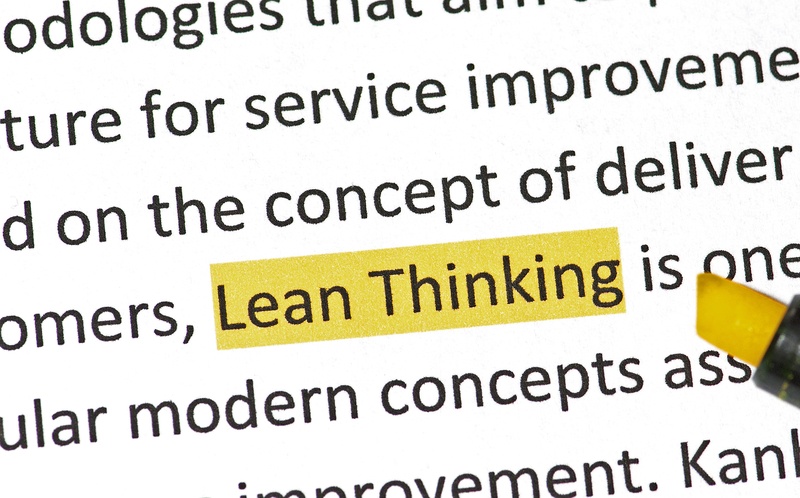Lean thinking readily decreases lead times and redeems significant revenues to enhance the organization’s progression and ambitions and certainly boosts organization’s productiveness and turnout. It enhances and promotes the company’s efficiency and is generally referred to as “improving progress and flow” and focuses mainly on minimizing waste.
Lean thinking is to think from new perspectives for making your organization standout from it’s competitors. It depends upon selecting different lean tools which ultimately eliminate waste production as well as steps and actions which are of no use. This also results in saving of extra cost, time and resources. Here, by “waste” we mean anything that is of no use for the customer, has no use and can hinder customer satisfaction. It could be any form the 7 wastes described below
- Overproduction
- Inventory
- Transportation
- Movement of goods
- Waiting time
- Over processing
- Defects
To reduce every form of waste there are special lean tools as for example, value stream mapping, five whys method, Heijunka, Andon and 5S etc. Now lets look at some of the benefits of lean thinking.
Implementation of Lean thinking
Before implementing lean thinking in your organization it is important to identify the company’s goals first. Implementation of lean might take long time and it is an ongoing side by side process. Its implementation might seem challenging but once implemented it makes everything smooth and stream lined.
Implementation of lean thinking generally includes following steps:
Designate Value
First step is to specify and determine values from customer’s perspective. Value should be expressed in provision to particular product, which fulfils client’s demands at specified time and cost.
Value stream mapping
Make a map of the existing and forthcoming state of the value stream. It recognizes and reduces the waste production in the existing state. It includes all the actions, resources, personnel and information required for customer satisfaction.
Value Stream Flow
Take actions to improvise the value stream flow by eliminating operating obstacles and improving the lead time.
Just in time manufacturing
JIT means to make the products as demanded by the customer rather than following the sales predictions that might result in overproduction or underproduction.
Benefits of Lean Thinking
Lean thinking is beneficial in terms of eliminating waste and any non value added actions. It enhances productivity and product quality by focusing mainly on customer’s actual needs, leading to customer’s satisfaction. There are many organizations that have improvised their system by implementation of lean thinking. Following are the benefits of lean thinking and how it helps an organization in improving their system for their benefit.
Elimination of waste
The major and foremost benefit of lean thinking is that prevents waste production in any form. Waste is any non value adding element in the operation having no use. According to a recent study, eliminating waste production saves up to 95% of cost, time and other resources.
Just in time manufacturing
Another important advantage of lean thinking is that it promotes just in time manufacturing. It helps a lot in preventing overproduction because products are formed exactly according to customer’s needs and requirements. This means formation of product takes place by customer pull. This results in minimal inventory levels of finished goods.
Fast production process
Due to elimination of non value added activities the production process is usually completed in days instead of weeks which result in better cycle and lead times.
Enhance product quality
Lean thinking also enhances and improvises product quality by reducing defects. This is also known as Six Sigma.
Multi skilled personnel
Lean thinking also trains the staff in such a way that they are experienced enough to carry out multiple tasks. In case of absence of any staff the production process does not stop because the process can be covered by another employee with multiple skills.
Focus
Lean thinking facilitates the employees to focus on the organization’s goals and objectives deeply. It involves every personnel from top management to lower in hierarchy and to evaluate the implementation of lean thinking, one can ask any personnel about the company’s goals and if they answer them correctly that means lean is implemented really well.
More profit
It also has financial impacts on the organization and helps it to gain more profit. By reducing the waste and improving the quality it actually saves a lot of cost and energy and can take your business to another level of success.
Conclusion
In a nutshell, Lean thinking improves productivity and customer satisfaction by reducing waste and improving quality as well as lead times and stock turns along with low inventory levels.






